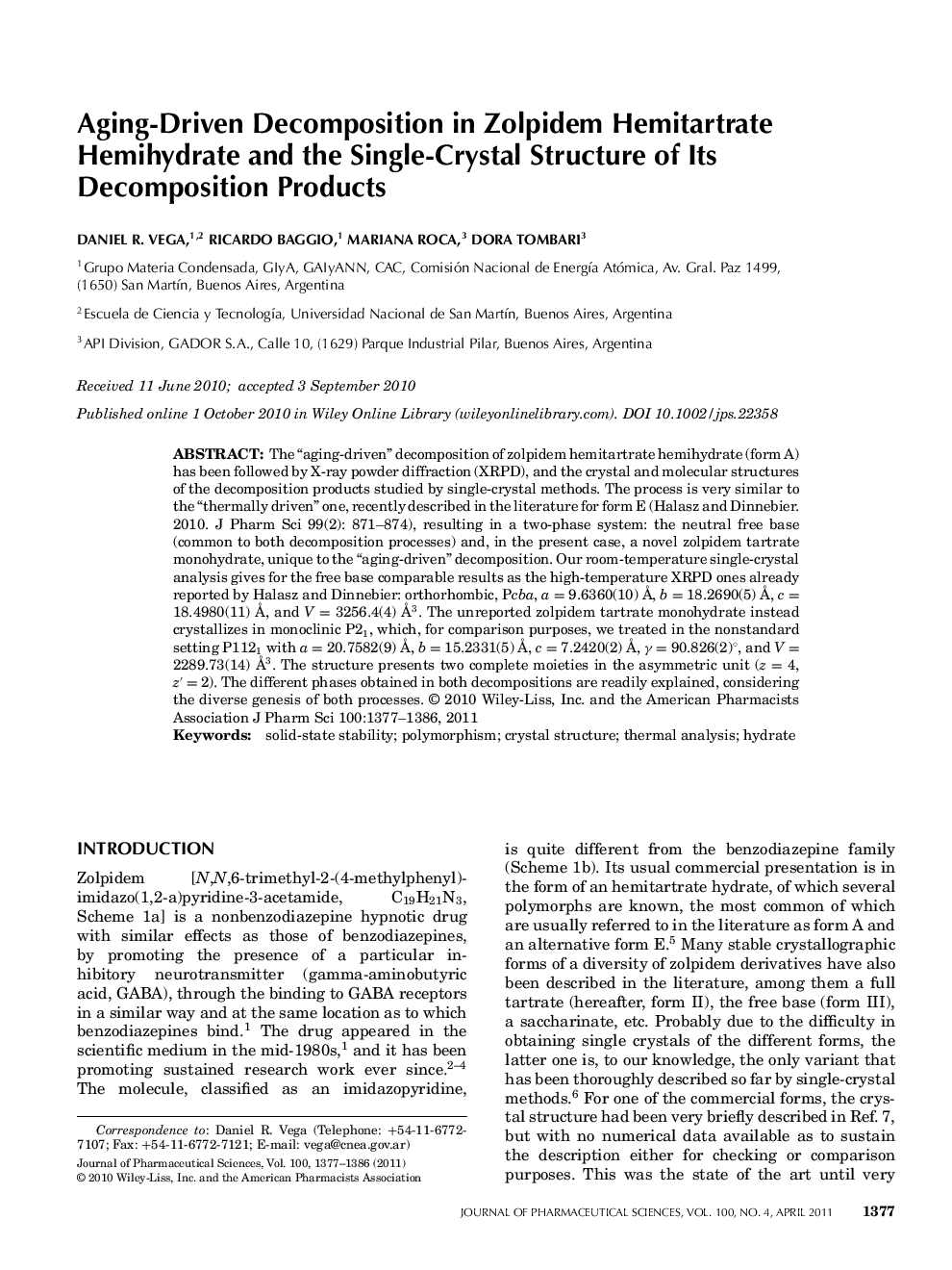| Article ID | Journal | Published Year | Pages | File Type |
|---|---|---|---|---|
| 2486668 | Journal of Pharmaceutical Sciences | 2011 | 10 Pages |
Abstract
The “aging-driven” decomposition of zolpidem hemitartrate hemihydrate (form A) has been followed by X-ray powder diffraction (XRPD), and the crystal and molecular structures of the decomposition products studied by single-crystal methods. The process is very similar to the “thermally driven” one, recently described in the literature for form E (Halasz and Dinnebier. 2010. J Pharm Sci 99(2): 871-874), resulting in a two-phase system: the neutral free base (common to both decomposition processes) and, in the present case, a novel zolpidem tartrate monohydrate, unique to the “aging-driven” decomposition. Our room-temperature single-crystal analysis gives for the free base comparable results as the high-temperature XRPD ones already reported by Halasz and Dinnebier: orthorhombic, Pcba, a = 9.6360(10) Ã
, b = 18.2690(5) Ã
, c = 18.4980(11) Ã
, and VÂ =Â 3256.4(4)Â Ã
3. The unreported zolpidem tartrate monohydrate instead crystallizes in monoclinic P21, which, for comparison purposes, we treated in the nonstandard setting P1121 with a = 20.7582(9) Ã
, b = 15.2331(5) Ã
, c = 7.2420(2) Ã
, γ = 90.826(2)°, and V = 2289.73(14) Ã
3. The structure presents two complete moieties in the asymmetric unit (z = 4, zâ²Â = 2). The different phases obtained in both decompositions are readily explained, considering the diverse genesis of both processes.
Related Topics
Health Sciences
Pharmacology, Toxicology and Pharmaceutical Science
Drug Discovery
Authors
Daniel R. Vega, Ricardo Baggio, Mariana Roca, Dora Tombari,
